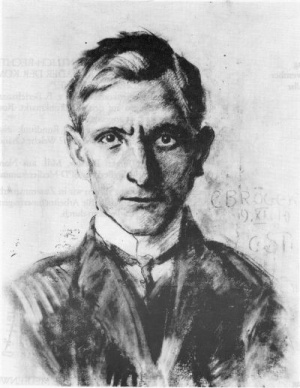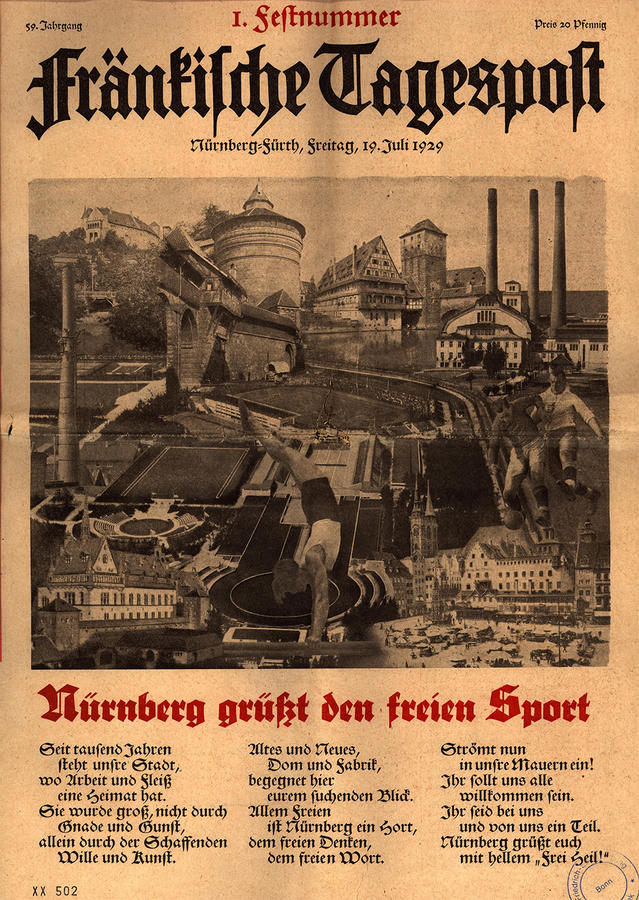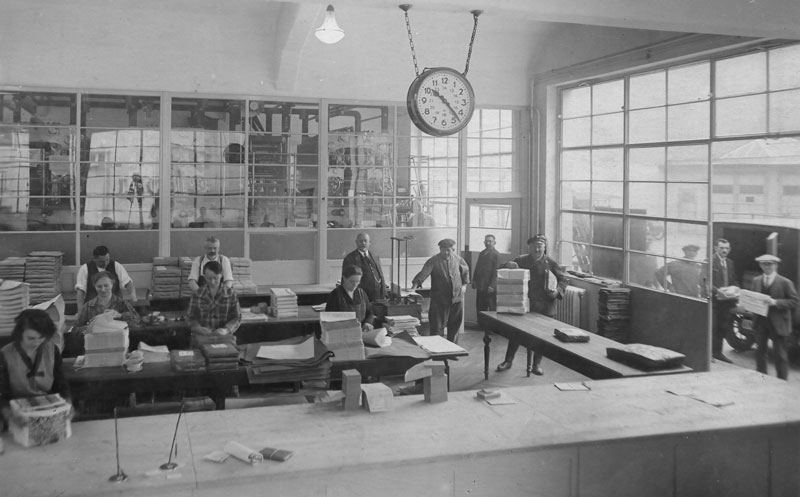History
The Karl-Bröger-Haus tells a story of work, pride, resistance and new beginnings. However, it cannot be told without the origin of the “Fränkische Tagespost”. From 1871, it informed residents in and around Nuremberg about the issues and topics of the day. After several moves and changes at the top, the popular newspaper got a new publisher in Fränkische Verlagsanstalt und Buchdruckerei GmbH. Now all that was missing was a suitable home. Thus, in 1930, the most modern and highest building in Nuremberg was built, which today has become a HOUSE FOR ALL.

Karl-Bröger-Haus
Home and future construction
At the end of the 1920s, the well-known Nuremberg architect Hans Müller, together with his son-in-law Karl Kröck, planned the house that was later named after Karl Bröger. Modern and functional it should be. For Nuremberg’s Social Democracy, the Workers’ Welfare Association and the “Fränkische Tagespost” needed a new home. Thus, the Bauhaus style with its typical features such as simple clear forms, a lot of glass and a flat roof was used as a model.
Nuremberg's most modern building
When it was completed, it was considered the most modern and highest building in Nuremberg – thanks to its architecture and six stories. It was also one of the first steel girder buildings and thus very robust – perhaps one reason why it survived the war period almost without damage. On October 11, 1930, the then Reich Chancellor Hermann Müller-Franken opened the house as the “most functional and beautiful building” of the German workforce.
The renovated house will be solid, not a showpiece, but a bulky functional building. It will serve the social, democracy and social democracy.
Special edition Fränkische Tagespost 1930 for the opening of the new building
"Stormy" times
Two and a half years after the opening, on the night of the 9. on the March 10, 1933, the National Socialists under the command of Julius Streicher took over the publishing house. They banned the “Fränkische Tagespost” and destroyed the inventory. Editors who were present were taken to the Dachau concentration camp. The house was now firmly in the hands of the Nazis. For a time, they had their newspapers printed here, such as the “Fränkische Tageszeitung” and the inflammatory paper “Der Stürmer”.
Reconstruction and new beginning
After the end of the Second World War, the Social Democrats got their house back – damaged, but at least not destroyed. August Meier, the long-time chairman of the Nuremberg SPD, rendered outstanding services to the reconstruction. Reconstruction proceeded quickly due to leasing to various companies and offices. This enabled Meier to realize another major goal: the resumption of the “Fränkische Tagespost”. It appeared again from 1946.
Deep cuts
The 1950s were characterized by expansion and conversion: in 1956, two residential buildings were added to the building – another source of income. Unfortunately, this could not change the economic situation of the “Fränkische Tagespost” change. Circulation declined steadily. In 1971, the company finally bid a wistful farewell to its readers. – This was a deep cut in the history of the company and its employees, almost all of whom, however, found employment at the “Nürnberger Nachrichten”.
Events in the print area
One era comes to an end, a new one begins: At the end of the 1990s, the former printing hall was converted into an event hall. Additional meeting rooms completed the event center. In 2007, the long-time chairman of the SPD Nuremberg and current mayor Christian Vogel ensured the restoration of the historic exterior lighting. From this point on, the building, which was still very modern, was known as the “Karl Bröger Haus”.
A House for All - with subtitle (refurbishment 2021)
A House for All - with Sign Language (Refurbishment 2021)
More diversity, fewer barriers
Between 2020 and 2022, floors 1 to 6 were renovated, with monument protection and the history of the building playing an important role. Modern and functional, it should still be and usable for as many people as possible. Therefore, they removed most of the barriers and made the building a “house for all”. Today, a wide variety of organizations with their offices, event organizers and, of course, every single visitor benefit from this: whether large, whether small – whether with disabilities or without.
100 years Karl-Bröger-Haus
The Karl-Bröger-Haus has always been ahead of its time and always adapted to new circumstances. Through depths and heights it led those who found their home here. In 2030, it will celebrate its 100th anniversary with a big party that will highlight the permanence of the house and the diversity of its residents. Owners, tenants and the residents of Nuremberg will celebrate “their” Karl-Bröger-Haus with various events and projects.
Karl Bröger
Social democrat, city councilor and labor poet
Even if it cannot be completely clarified when and how exactly the once tallest building in Nuremberg got its name – no other name would suit it better. A Social Democrat through and through, politician and talented working-class poet: Karl Bröger was one of the formative figures of the SPD Nuremberg and the Fränkische Verlagsanstalt.
From construction worker to lyricist
Born in Nuremberg on March 10, 1886, he first learned the trade of a merchant. But he earned his money as a construction worker. Karl Bröger discovered his talent for writing at an early age. He published volumes of poetry and worked as an editor at the “Fränkische Tagespost”.
From 1924 Karl Bröger was a co-founder of the Franconian district of the “Reichsbanner Schwarz-Rot-Gold” and worked as a writer and speaker for the republican Schutzbund. At that time, he published the weekly “Stachelhecke” in the “Fränkische Tagespost”. In this satirical political series, he directed himself against the Nazis on several occasions.

Political activity and resistance
In 1933, Karl Bröger was elected to the city council. Shortly afterwards, the Nazis stormed the printing house of the “Fränkische Tagespost”. Karl Bröger and other editors had to resign immediately and were taken to the Dachau concentration camp. After a short time Karl Bröger was released, but he did not think about emigration. He wanted to stay in Nuremberg and continue working as a writer. The Nazis continued to observe him and his work, as evidenced by a secret SS directory.
Comrade and poet until death
In 1943, a bomb damaged the Bröger family’s house so badly that they had to flee. In Kalchreuth, they finally found lodging at the “Drei Linden” inn. There Karl Bröger continued to be in contact with his friends and comrades of the SPD, which the Nazis had banned. Towards the end of that year, cancer of the larynx broke out, from which he died on May 4, 1944.
A detailed biography is available from the office of the Karl Bröger Society. His works can also be viewed at the office.
Karl-Bröger-Gesellschaft

Song of work
Countless hands are ready,
support, lift, carry our time.
Any arm that strikes its anvil,
is an atlas that carries the earth.
What whirrs and purrs and clanks and stomps there,
from the food glowing blazes and steams,
Wheels rattle and machine sound
is the mighty song of labor.
A thousand wheels must go whizzing,
a thousand spindles turning in circles,
Hammers fall with a thud, blow after blow,
that the world may only exist first.
A thousand temples must glow with fever,
Thousands and thousands of brains are spraying sparks,
that the eternal flame brightens,
Giving light and warmth to all the world.
Karl Bröger
